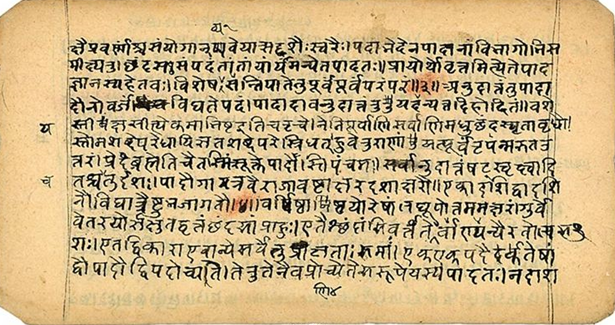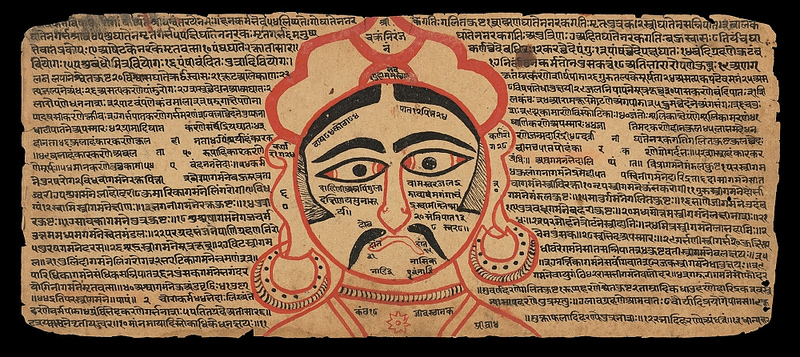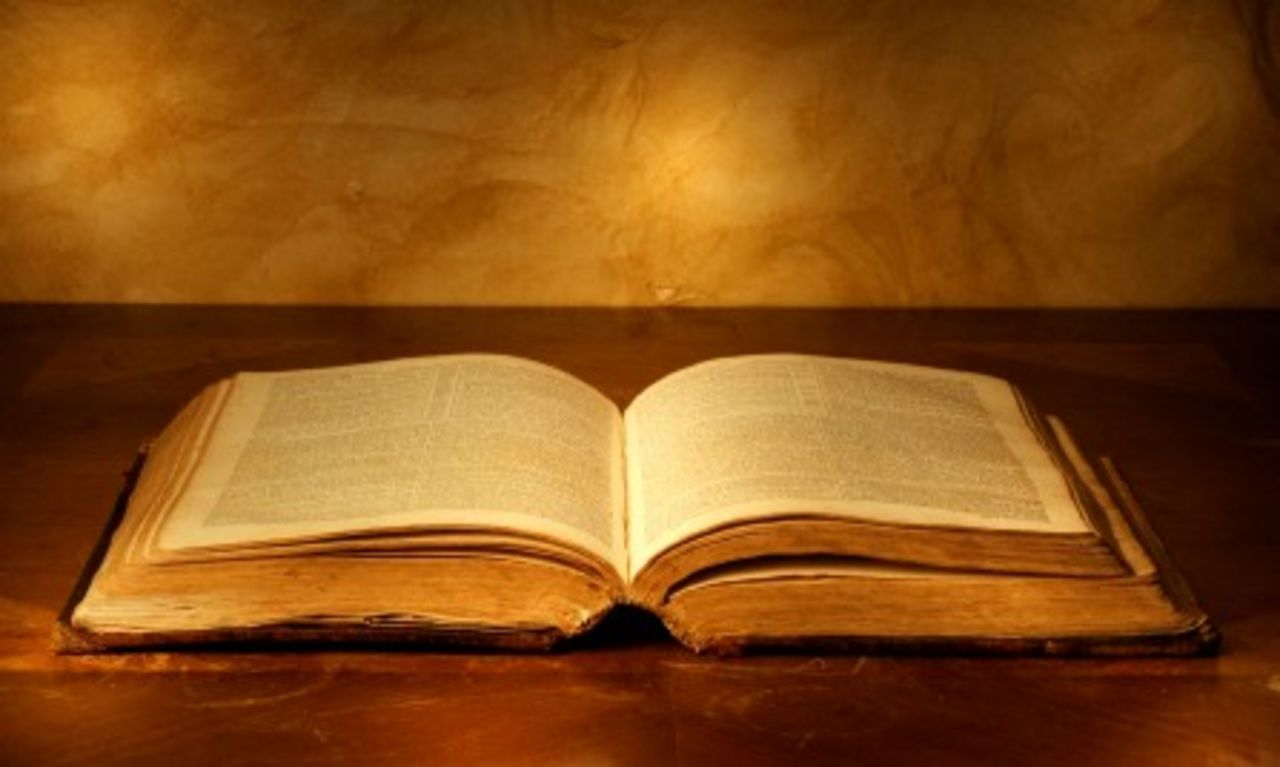Sanskrit & Sanskruti Part II – Is it needed to be taught or not?
To continue my series on Sanskrit, is the second installment. It will start on the misinformation campaign on it.
The Misinformation Campaign on Sanskrit
The very basis of arguments of the opponents of teaching Sanskrit from primary level of education either in India or in any other sovereign nation interested in teaching it to their posterity, is based on a wrong premise. The main argument centers around the wrong notion that all the scriptures or other literature written in Sanskrit were intended only for one /Varna/, the Brahmin and others were prevented from learning It. But the scriptures and Itihasas tell a different story.
In fact, Kshatriyas and Vaishyas also learned. Rama and Krishna both studied in traditional gurukulas. The great Dharma raja of the Mahabharata who was learned in sanskrit and righteousness was the Kshatriya Pandava Yudhisthira. King Bhartruhari and even the Saka
Rudradaman wrote poetry in chaste Sanskrit.
How do then do opponents of Sanskrit oppose teaching Sanskrit, dubbing it as “Brahminical”? The main scripture they quote is from Rigveda. This portion is called the Purusha Suktam. Purusha sukta (puruṣasūkta, पुरुष सूक्त) is hymn 10.90 of the Rigveda, dedicated to the Purusha, the “Cosmic Being”. [1]
The first controversy surrounding the hymn was that it was interpolated at a latter period to perpetuate the caste division in Hindu society, amongst other arguments in this direction. But this argument was debunked by many Hindu scholars, the main being Tiru B.V.Kameswar Aiyar, who stated thus:
“The language of this hymn is particularly sweet, rhythmical and polished and this has led to its being regarded as the product of a later age when the capabilities of the language had been developed. But the polish may be due to the artistic skill of the particular author, to
the nature of the subject and to several other causes than mere posteriority in time. We might as well say that Chaucer must have lived centuries after Gower, because the language of the former is so refined and that of the latter, so rugged. We must at the same time confess that we are unable to discover any distinct linguistic peculiarity in the hymn which will stamp it as of a later origin.”
The Purusha Sukta, in the seventh verse, hints at the organic connectedness of the various classes of society. What does the hymn state that is so controversial? It is this part:
यत्पुरुषं व्यदधुः कतिधा व्यकल्पयन् ।
मुखं किमस्य कौ बाहू का ऊरू पादा उच्येते ॥११॥
Yat-Purussam Vya[i-A]dadhuh Katidhaa Vya[i-A]kalpayan |
Mukham Kimasya Kau Baahuu Kaa Uuruu Paadaa Ucyete ||11||
Meaning:
11.1: What did the Purusha (i.e. Virat) hold within Him? How many parts
were assigned in His Huge Form?
11.2: What was His Mouth? What was His Arms? What was His Thighs? And
what was His Feet?
ब्राह्मणोऽस्य मुखमासीद् बाहू राजन्यः कृतः ।
ऊरू तदस्य यद्वैश्यः पद्भ्यां शूद्रो अजायत ॥१२॥
Braahmanno-Asya Mukham-Aasiid Baahuu Raajanyah Krtah |
Uuruu Tad-Asya Yad-Vaishyah Padbhyaam Shuudro Ajaayata ||12||
Meaning:
12.1: The Brahmanas were His Mouth, the Kshatriyas became His Arms,
12.2: The Vaishyas were His Thighs, and from His pair of Feet were born
the Shudras.
*Now, what else it states in later verses?*
चन्द्रमा मनसो जातश्चक्षोः सूर्यो अजायत ।
मुखादिन्द्रश्चाग्निश्च प्राणाद्वायुरजायत ॥१३॥
Candramaa Manaso Jaatash-Cakssoh Suuryo Ajaayata |
Mukhaad-Indrash-Ca-Agnish-Ca Praannaad-Vaayur-Ajaayata ||13||
Meaning:
13.1: The Moon was born from His Mind and the Sun was born from His Eyes,
13.2: Indra and Agni (Fire) were born from His Mouth, and Vayu (Wind)
was born from His Breath.
नाभ्या आसीदन्तरिक्षं शीर्ष्णो द्यौः समवर्तत ।
पद्भ्यां भूमिर्दिशः श्रोत्रात्तथा लोकाँ अकल्पयन् ॥१४॥
Naabhyaa Aasiid-Antarikssam Shiirssnno Dyauh Samavartata |
Padbhyaam Bhuumir-Dishah Shrotraat-Tathaa Lokaa Akalpayan ||14||
Meaning:
14.1: His Navel became the Antariksha (the intermediate Space between Heaven and Earth), His Head sustained the Heaven,
14.2: From His Feet the Earth (was sustained), and from His Ears the Directions (were sustained); in this manner all the Worlds were regulated by Him. [1]
The main objection and the argument that this Suktam was interpolated by the upper caste Brahmins was this. From my face Brahmin was born, from shoulders the Kshatriya, from thighs the Vysya and from feet the Sudra.
If you go further, the Lord states:
“The moon takes birth from the Purusha’s mind and the sun from his eyes. Indra and Agni descend from his mouth and from his vital breath, air is born. The firmament comes from his navel, the heavens from his head, the earth from his feet and quarters of space from his ears. Through this creation, underlying unity of human, cosmic and divine realities is
espoused, for all are seen arising out of same original reality, the Purusha.” [1]
Shudras are born from the feet of The Lord andso too the Earth.What sustains us with all the requirements for a happy living? Is it the unknown Heaven or the known Earth that bears the burden of humanity? That said, the other elements like Agni, Vayu etc., too are needed but
without Earth, why do we need all these?
Right interpretation of the text of the hymn clearly enunciates one undeniable fact: That like the Earth, the Lord intended the Shudras as the main sustaining force of humanity.
Let us explain it in the mundane language. A Brahmin attains jnana and teaches, Kshatriya fights, Vaishya sells the needed goods. But what is the use of jnana, if you are not secure? What is the use of security if you can not buy the needed essentials? What is the ultimate use of all the three if someone who works hard to produce the needed goods is not there?
If a man is without feet, what can he do by having all the three other qualities? So, who occupies the prime place in the God’s creation, the Shudra or the sustainer of all the other three. But, again the Shudra (and other varnas) requires guidance from the jnana of Brahmin, security through bravery of the Kshatriya and someone to market his products in the form of a Vaishya. But he forms the crux of sustenance like the Earth that sustains us with the help of other elements.
This argument may look mundane from a philosophical point of view, but I feel no God who is the Parent of humanity would like to see one section of his own creation as inferior to other section and the other section, a higher section and so on. In the Higher Order of the Universe a moth living for 30 minutes, post seeing the light of the day to the longest living animal have the same value in God’s view. Or else he would not have created a moth without a purpose to serve the Earth.
The barriers are created by us and were used by so called upper caste zealots (i.e. casteists) then and the so called Human Rights activist zealots now, who make a living by keeping the society ignorant of our rich cultural heritage and our richest language.
The Ignorant Law Makers
Even as I was closing the first part and going into the origin, importance and value of Sanskrit in present day life, a funny anecdote took place in the House of “Elders” in India. A self-professed Gandhivadi, who was ignorant that Gandhi relied only on Alternate Medicine, brought one bottle of an Ayurvedic formulation named “PUTRA JEEVAK” and started a commotion in the house that Yoga Guru Ramdev was a male chauvinist, who produced medicine for birth of male child. Ramdev Ashram never propagated it, nor was it mentioned on the bottle anywhere, that it was so. Member after member, from pseudo secular parties
expressed surprise, shock, anguish and what not that Ramdev was discouraging female birth.
Later, Ramdev clarified it was the original botanical name of the medicinal plant from which it was prepared and that in Sanskrit “Putra Jeevan” represents birth of child, both male and female. This strengthens the argument that Sanskrit must be taught from primary stage, as it crops up daily in our life and not knowing meaning of simple words will be fodder to the Media and NGOs funded by Missionaries. At least 20-25 years from now, this kind of Gandhi vadis will not have ability to make mountains out of mole hills.
********************
I had to dwell upon a subject deviating from the main topic only to show that Sanskrit was never a purely “Brahminical” language as is being wrongfully projected by vested interests. Nor is it now, all the more so with the whole concept of*Varnashrama Dharma* changing with 99% of us being Shudras or workers and it is essential to teach Sanskrit from early ages so that our culture is known to the world. It is a rich culture, not less to any other.
Origin & Aspects of Sanskrit
The Sanskrit verbal adjective sáṃskṛta- may be translated as “highly
elaborated”, “cultured”, or literally, “refined”. [2] It is not just a
language of rituals and /agraharas/, but a language of poetry, romance,
and royalty. Though western scholars posit it as evolving from a
Proto-Indo-European, no doubt to link the language to them, our
traditional scholars hold it as the /Devabhasha/, language of the Gods.
Indeed, it is one of the 22 official languages of India and is
the/*second official language of the state of Uttarakhand
<http://www.hindustantimes.com/india-news/sanskrit-is-second-official-language-in-uttarakhand/article1-499467.aspx>*/.
/*Sanskrit literature maintains an outstanding tradition in fields
running from poety and drama to dharma and politics.*/ The sciences were
taught in Sanskrit, and numerous texts such as the /bija ganita/ of
/Bhaskara/ herald a storied tradition in mathematics. While Sanskrit is
the ceremonial language in Hindu rituals and Buddhist practice [3], it
is also a spoken one in a number of villages to this day. [4]
Prior to Panini, we had Vedic Sanskrit. Western scholars date the
language of the Rigveda dating back to as early as the early second
millennium BCE, but our Traditional scholars hold it to be far more
ancient. Sanskrit, the classical form was used from the Ashtadhyayi
onward, and the elaborated language was used in religious practices by
/Brahma Jnanis/. The natural, ordinary language ‘Prakryta’ was used by
common folk.
Classical Sanskrit versus the Common Language
/*It is known across globe that languages undergo imminent change as the
society evolves into modern ages, each as per the changes brought
about*/. Thus, English too underwent change with advent of internet with
words “google” finding their way into lexicons and short messaging
changing the very format of language. So too, Sanskrit and many Indian
languages changed in form and format.
Vedic Sanskrit is distinct from Classical Sanskrit. Indeed, we see a
marked change between the language of the Chatur Veda and the great
Epics of the *Ramayana *and *Mahabharata*. This transformation is
attributed to the influence of the Prakrits (or common speech). Pandits
refer to such developments as “rsis”. Incidentally, this is the
traditional title of our ancient authorities and great scholars. [4]
According to the 2001 census of India, 14,135 people reported Sanskrit
as their native language. In fact, there are several villages, where
Sanskrit is the spoken language. We can see the all India nature of
this as well, whether North, South, East, or West [5]:
/*Mattur
<http://timesofindia.indiatimes.com/india/This-village-speaks-gods-language/articleshow/1199965.cms>*/,
Shimoga district, /*Karnataka*/| /*Jhiri
<http://www.hindustantimes.com/news-feed/madhyapradesh/sanskrit-boulevard/article1-339234.aspx>*/,
Rajgarh district, /*Madhya Pradesh*/| /*Ganoda
<http://www.thehindu.com/todays-paper/tp-features/tp-fridayreview/article659329.ece>*/,
Banswara district, /*Rajasthan*/| /*Shyamsundarpur
<http://www.theindiapost.com/features/featured/orissa%E2%80%99s-sasana-village-%E2%80%93home-to-sanskrit-pundits/>*/,
Kendujhar district, /*Odisha* /
Please note these are all backward areas as per Indian standards. As I
said earlier, if there is flair and we feel it fair, nothing comes in
the way of learning a language and communicating in it, Indian or alien.
More than 3000 Sanskrit works were published since independence, the
language being no less authoritative than the Vedic Language but with
needed changes as per changing ages.
What’s more, it is highly relevant in the world of music as well.
Sanskrit, as the language of the *Natya Sastra*, is the origin and
treasury of words in the *Carnatic *and Hindustani branches of classical
music. More interestingly, China has recorded the first musician to
record a pop song in Sanskrit (Sa Ding Ding). While our misguided
mediawallahs call Sanskrit “boring”, the modern obsessed Chinese have
given a pop song in the language. [6]
Over 90 news publications are published in Sanskrit. Sudharma, a daily
newspaper in Sanskrit, has been published out of Mysore, India, since
the year 1970. [7] */Doordarshan <http://webcast.gov.in/live/>/*has
revamped its/*Sanskrit News programming
<http://economictimes.indiatimes.com/news/politics-and-nation/sanskrit-set-to-make-a-comeback-on-doordarshan-this-july-focussing-on-events-from-around-the-world/articleshow/47195734.cms>*/.
[8]
When the very national mottos of India and Nepal are in this most
perfect of langauges…
Republic of India: Satyameva Jayate meaning: Truth alone triumphs.
Nepal: Janani Janmabhoomischa Swargadapi Gariyasi meaning: Mother and
motherland are superior to heaven.
…how then is this matter even up for debate? But leave aside the Indian
Subcontinent, what of the /*legions of yoga practitioners in the west
<http://www.huffingtonpost.com/2012/12/06/american-yoga_n_2251360.html>
*/who study it to learn the asanas and mantras?
*Foreigners want what our Foreign Obsessed Fools Reject*
sanskritstjames
<http://www.andhraportal.org/sanskrit-sanskruti-part-ii-is-it-needed-to-be-taught-or-not/sanskritatstjames.org.uk.>
Many of you may have heard about how Sanskrit was taught in Europe in
many Universities. In fact, Sanskrit is being taught today not just in
the UK, but in Germany as well (/*ironic given the recent controversy
<http://www.dnaindia.com/analysis/standpoint-sanskrit-vs-german-no-moksha-for-max-mueller-2041315>*/).
While our silly people rant about how German and other European
languages might get them jobs so they can migrate (how does this benefit
the country?), Europeans are teaching their students our Devabhasha.
Sanskrit fever grips Germany: 14 universities teaching India’s
ancient language struggle to meet demand as students clamour for
courses.
According to a Daily Mail article, German students are clamoring for
studying Sanskrit. /*Inter alia the report states
<http://www.dailymail.co.uk/indiahome/indianews/article-3038926/Sanskrit-fever-grips-Germany-14-universities-teaching-India-s-ancient-language-struggle-meet-demand-students-clamour-courses.html>*/:
Will Germans be the eventual custodians of Sanskrit, its rich
heritage and culture? If the demand for Sanskrit and Indology
courses in Germany is any indication, that’s what the future looks like.
Unable to cope with the flood of applications from around the world,
the South Asia Institute, University of Heidelberg, had to start a
summer school in spoken Sanskrit in Switzerland, Italy and – believe
it or not – India too.
/*Do we as Indians not have*//*any shame?*/ Are we so lost and adrift
and culture-less as a people that we need, indeed, look to others to
learn, preserve, and even teach us our own heritage? The fools among us
will say “/yessir, this is great, we will be progressive, not
regressive/“. Rather than encouraged, they should be laughed at. /*Such
shameless fellows would happily sell their mothers as well, so what then
is Mother Sanskrit to them?*/
<https://play.google.com/store/apps/details?id=com.sparshapps.sanskrit>Sanskrit
Primer
<https://play.google.com/store/apps/details?id=com.sparshapps.sanskrit>
**********************************************
To Be Continued
Next Part: I will discuss the importance of sanskrit not only to our
ancient culture, but how it influenced and helps preserve our regional
languages also, like Andhra bhasha: Telugu
*References:*
1. http://www.greenmesg.org/mantras_slokas/vedas-purusha_suktam.php
2. Williams, Monier (2004). /A Sanskrit-English dictionary :
etymologically and philologically arranged with special reference to
cognate Indo-European languages/. New Delhi: Bharatiya Granth
Niketan. p. 1120.
3. Oberlies, Thomas (2003). A grammar of epic Sanskrit. Berlin New York:
Edgerton, Franklin (2004). Buddhist Hybrid Sanskrit grammar and
dictionary. Delhi: Motilal
Banarsidass.http://www.theindiapost.com/features/featured/orissa%E2%80%99s-sasana-village-%E2%80%93home-to-sanskrit-pundits/
4. http://journals.cambridge.org/action/displayAbstract?fromPage=online&aid=80241&fileId=S001041750100353X
5. http://timesofindia.indiatimes.com/india/This-village-speaks-gods-language/articleshow/1199965.cms
6. BBC. “BBC – Awards for World Music 2
7. https://en.wikipedia.org/wiki/Sanskrit#cite_note-Mint2012-33
8. “News on Air”. News On Air. 15 August 2012. etc.
About Chandra Mohanrao
An ex-banker, saw highs and lows in life, Presently spending time with
children and grandchildren extensively traveling across India and Globe.
Writing is a passion. Never did it for money, nor do I wish to do it.
One critique and one word of appreciation is all what I want.











